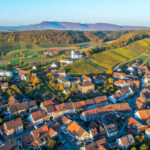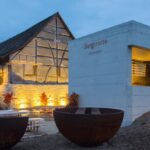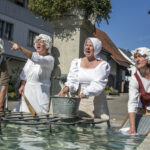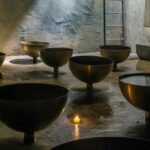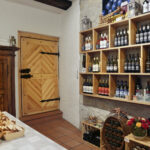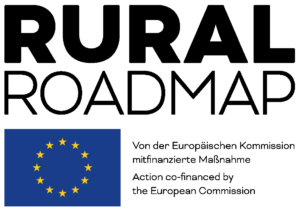
Culinary Region Wilchingen and Trasadingen, Schaffhausen, Switzerland
The intercommunal municipal association “Genussregion” (region of delight or culinary region) consist of the villages Wilchingen, Osterfingen and Trasadingen and spans a total of 2524 hectares. It is located in the West of the canton Schaffhausen in the characteristic landscape region Klettgau and is part of the nature park Schaffhausen.
The municipality Wilchingen consists of the villages Wilchingen and Osterfingen, following their voluntary fusion in 2005. Together with the municipality Trasadingen, west of Wilchingen, on the border to Germany, the region counts around 2310 inhabitants, with a slight population growth trend.
An important foundation for the region is its natural landscape, characterized by vineyards, arable land and vast forests. Agriculture, especially viticulture, is the economic backbone of the municipalities, although the number of agricultural enterprises is declining. Strengthening economic and agricultural development in the area was subsequently the driving objective for the founding of the municipality alliance. The alliances beginnings date back to 2000, it was finally officially founded in 2008.
A focal point of the collaboration is the strengthening of the viticulture region with a clear emphasis on refinement and improvement of the wines and regional marketing of products. Central to this is the experience of the wine region as a symbiosis of landscape, wine and culture. Workshops, task groups and key players in the region conceived and implemented a variety of creative projects, such as the “Wine Cellar Experience” and the theme path “Robbers, Romans, Delight” which also serves as a tourist attraction.
An especially noteworthy project is the “Bergtrotte Osterfingen” which became the centerpiece for the Genussregion. This former wine-press house, dating back to 1584, was renovated meticulously, preserving its original charm amidst a stretch of vineyards. It was revitalized and reused as a venue and wine center including a restaurant and seminar rooms, representing a triumphant symbiosis between old and new building structures.
The women of the region with their creative and bold ideas and activities are another highlight, unified by their careful handling of regional products, farmed and produced with great care and love. For example, the growing of various rose species lead to an interesting new agricultural branch. Also worth noting are the so-called “Wöschwiiber” (washerwomen), who offer guided tours through the municipality and spill juicy bits of gossip along the way. Initiated and run by the regions women, the Apéro group provides catering for celebrations and events. In 2012, the association “Landfrauen Apéro Schaffhausen” was founded, which deals with the processing of regional products from its gardens and meadows and creates great profits for the region.
Another central goal is the development of public and semi-public spaces. At the center of Wilchingen, the “Wiiplatz” was established on a private vineyard property as a semi-public meeting space. Its entire inventory was created from recycled materials, which adds to its unique character. Private gardens are very well designed, adding to the traditional cottage garden culture. Particularly interesting are the “open gardens” in Osterfingen, which are used as part of a “living” museum trail.
To make use of tourism, a variety of diverse sleeping accommodations were created to ensure a unique experience during a visit. For example, guests can sleep in a historic “Waschhüsli” (wash house), in large wooden barrels or rooms that resemble barrels.
The winegrowing villages feature unique cultural and structural qualities due to their location. Wilchingen, Osterfingen and Trasadingen are also documented as part of the Federal Inventory of Heritage Sites of national importance ISOS. Lastly, the Heating Network Wilchingen supplies teleheating produced from woodchips to the village core of Wilchingen and parts of Osterfingen and serves as an important stepping stone for the regions goal to become carbon-neutral.
The formation of the “Genussregion” allowed both municipalities to increase their revenue especially in the agriculture, viticulture and tourism sectors and to create a new economic branch with the refinement of various local products. The openness of both municipalities to each other as well as towards guests from around the world, as shown in the creation of public and semi-public spaces, enriches and revitalizes the villages and subsequently contributes to the wellbeing of locals.
Evaluated: 2020
- ©Bruno Sternegg
- ©Elge Kenneweg
- ©Elge Kenneweg
- ©Elge Kenneweg
